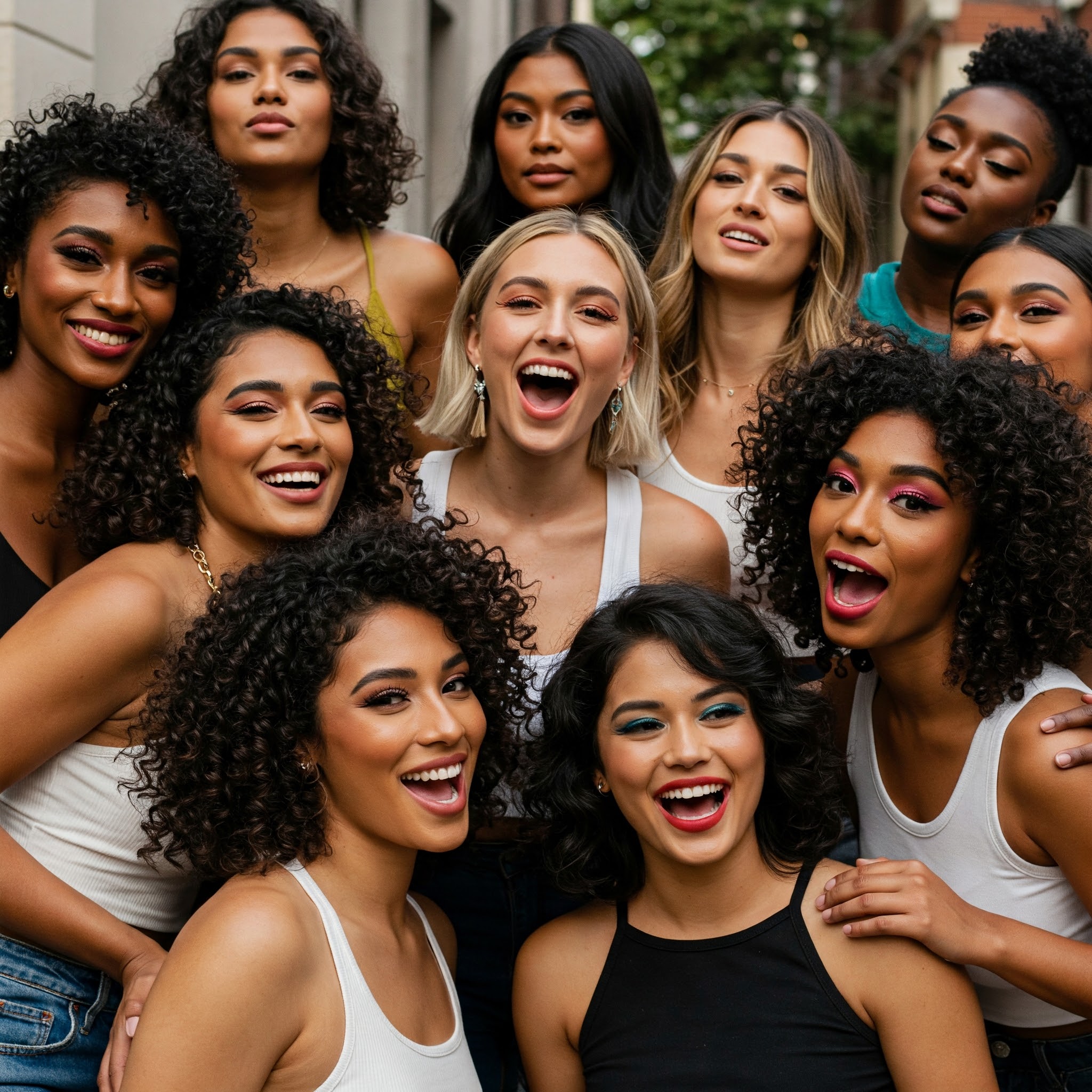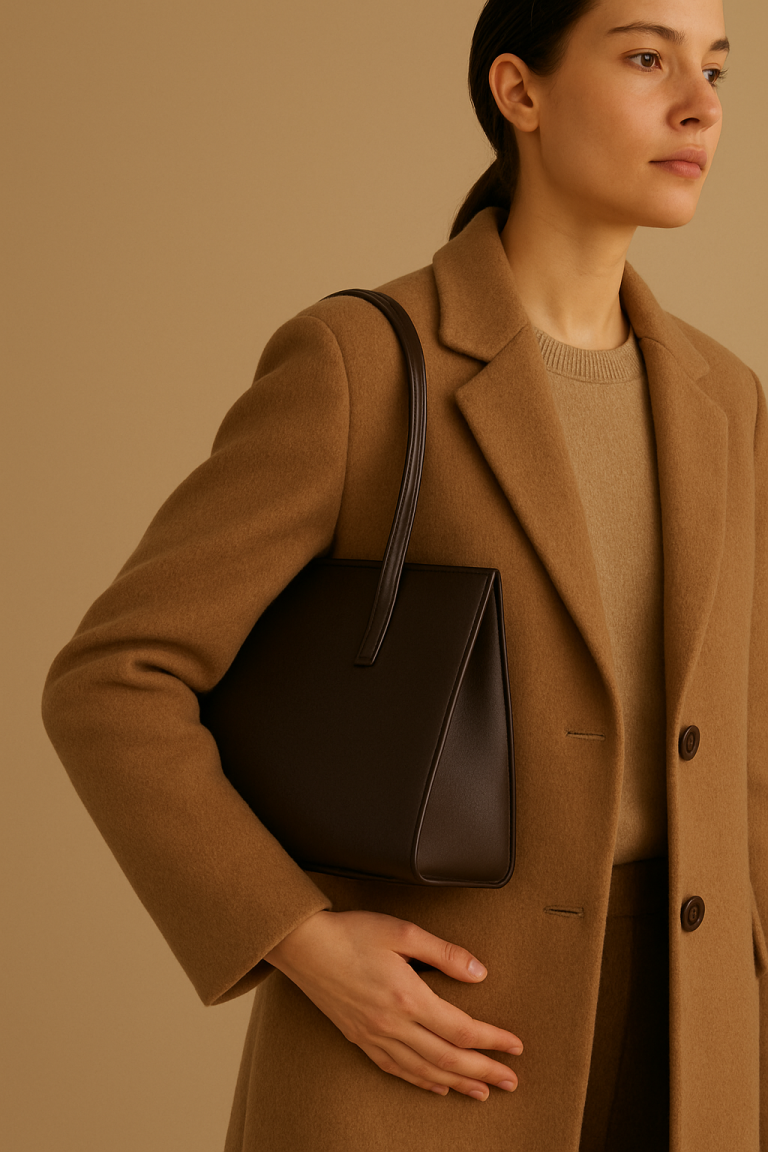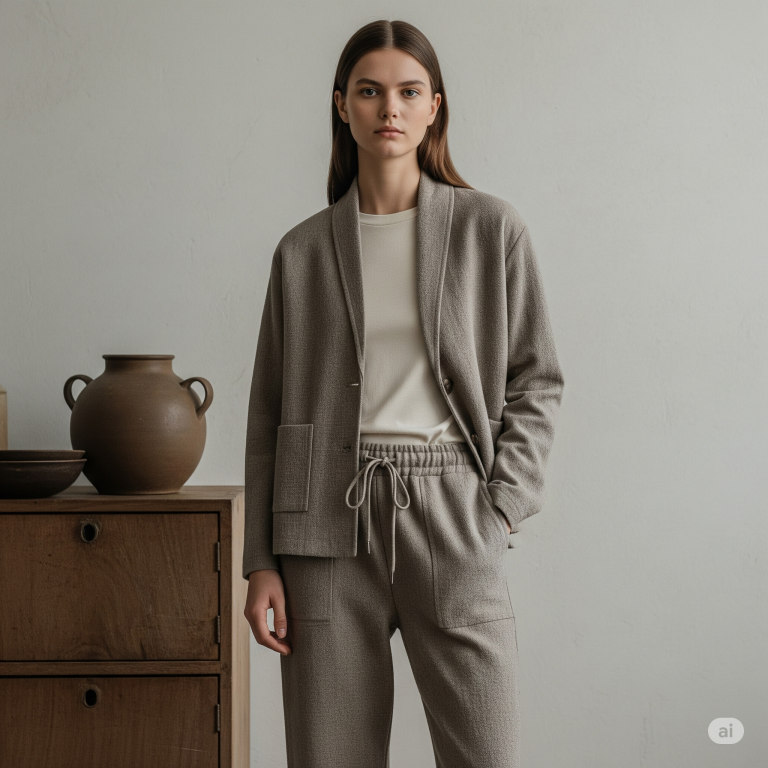
It began with a mirror.
For decades, countless people stood before glassy reflections and saw not themselves, but a compromise. Foundation that left a grayish tint. Lipsticks marketed with undertones meant for someone else. Campaigns filled with faces unlike theirs. A relentless whisper of inadequacy echoed through drugstore aisles and luxury counters alike.
But today, a quiet revolution has become a battle cry.
This isn’t just makeup—it’s reclamation. Identity painted in pigment. Individuality in shimmer. Power in every palette.
Welcome to the age of Your Beauty, Your Rules: A Manifesto for an Inclusive Future.
Beyond the Beige Bandage: How the Beauty Industry Failed Us (and How It’s Changing)
For too long, beauty came in a bottle marked “universal” that was anything but. Foundations in “nude” that catered only to a narrow band of pale undertones. Concealers designed to erase blemishes, not celebrate birthmarks or freckles or vitiligo. Eyeshadows labeled “natural” that ignored entire melanin spectrums.
The industry’s history is littered with exclusion. Entire demographics marginalized by marketing. Darker-skinned consumers either ignored or told to “mix two shades.” Non-binary individuals and men who love makeup were treated as anomalies, not audiences. Mature skin? Barely mentioned.
Beyond the Beige Bandage: How the Beauty Industry Failed Us (and How It’s Changing) isn’t just a catchy phrase. It’s an indictment of decades where diversity was a seasonal trend, not a core value.
But change has begun.
New brands have risen, born from frustration and vision. Legacy giants are being held accountable. Transparency is no longer optional. And consumers—bold, vocal, unrelenting—have become the heartbeat of this transformation.
The New Faces of Beauty: Celebrating Skin, Age, Gender, and Beyond
Step aside, one-size-fits-all. This is the era of every face.
The New Faces of Beauty: Celebrating Skin, Age, Gender, and Beyond is more than inclusive advertising—it’s systemic reconstruction. It’s about seeing a hijabi woman in a red carpet campaign. An elderly model showcasing luminous highlighter. A non-binary teen demoing eyeliner on TikTok. A freckled boy with Down syndrome fronting a skincare brand.
Beauty now stretches its arms wide, embracing what was once hidden, marginalized, or muted.
It’s in the textured richness of vitiligo celebrated rather than concealed. In silver hair worn with defiant grace. In drag queens blending blush like war paint. In acne-prone influencers posting raw, unfiltered selfies—and selling out skincare lines.
In a world once obsessed with flawlessness, there’s poetry in authenticity.
Shade Ranges That Actually Match: The Science, the Struggle, and the Revolution
The shade range issue was always the canary in the coal mine.
How could a brand boast thirty lipstick colors but only five foundation tones? How could “inclusive” mean “more beige”? Consumers demanded better, and science finally caught up.
Shade Ranges That Actually Match: The Science, the Struggle, and the Revolution is the technical triumph of the new beauty movement.
It begins in labs. Undertones, not just overtones. Cool, warm, olive, neutral, golden. The rise of AI color-matching tools. The embrace of flexible formulas that adapt to skin’s natural oxidation.
But science without intention is hollow. It was advocacy that pushed this change. Influencers dissected formulas, demanded swatches, exposed failures. And consumers began voting with their wallets.
Now, shade ranges are stretching into the fifties, sixties—even nineties. Brands like Fenty didn’t just disrupt—they detonated. And others followed, reluctantly or boldly.
True inclusivity isn’t offering two dark shades at the end of a lineup. It’s embedding diversity into product development, from concept to campaign.
Because no one should have to feel like an afterthought on a shelf.
Clean, Cruelty-Free, and Conscious: The Rise of Ethical Inclusivity
Inclusivity is not only about who gets to wear the makeup, but how that makeup exists in the world.
Clean, Cruelty-Free, and Conscious: The Rise of Ethical Inclusivity is about aligning beauty with values. Because inclusivity without ethics is just aesthetic.
Today’s conscious consumers are asking the hard questions:
- Was this tested on animals?
- Were these ingredients sustainably sourced?
- Is this brand paying living wages to its workers?
- Is the packaging recyclable? Biodegradable?
The answers matter.
Ethical beauty doesn’t just mean clean formulas—it means clean practices. It means ensuring that brown and Black communities aren’t exposed to toxic chemicals in mass-market products. It means transparency, from ingredient lists to supply chains.
Inclusivity must reach beyond complexion and into conscience.
It’s why small brands rooted in BIPOC communities are leading the way. Why “clean” no longer means “expensive” or “elitist.” And why consumers now demand ethics with their eyeliner.
Makeup as Self-Expression, Not Conformity: Embracing Individual Style in an Inclusive World
Beauty, once a set of rules, has become a rebellion.
Makeup as Self-Expression, Not Conformity: Embracing Individual Style in an Inclusive World flips the script. It isn’t about contouring your nose to look smaller, or hiding hyperpigmentation, or achieving that filtered “Instagram face.” It’s about choice. Play. Art.
Today’s makeup mavens aren’t trying to conform—they’re creating characters, honoring heritage, experimenting with fantasy. A swipe of turquoise liner on a Monday. Neon brows on a Tuesday. No makeup at all on a Wednesday.
Makeup is now as fluid as gender. As changeable as mood. As boundless as imagination.
Forget “beauty rules.” The new rule is this: There are no rules.
The Role of Influencers and Community: Amplifying Diverse Voices and Shaping the Future of Beauty
No one shaped this revolution alone.
The Role of Influencers and Community: Amplifying Diverse Voices and Shaping the Future of Beauty is the story of power shifting from boardrooms to bedrooms.
It was Jackie Aina demanding foundation ranges that respected deep skin tones. NikkieTutorials coming out as transgender and reclaiming beauty’s stage. Bretman Rock blending charisma with contour in every video. Youth-led TikTok creators redefining what it means to be a beauty guru.
But beyond the stars, it’s the micro-influencers. The reviewers. The community members leaving 500-word Sephora reviews. The Discord chats. The Substacks. The crowdsourced spreadsheets of undertones and wear tests.
It’s community-driven innovation.
Inclusivity is no longer top-down—it’s grassroots. The people shape the trends, call out the faults, and spotlight the gems. The future of beauty isn’t manufactured in a lab—it’s co-created in comment sections and kitchen-table tutorials.
Your Beauty, Your Rules: A Manifesto for an Inclusive Future
Let this be the vow we wear like highlighter across our cheekbones:
Your beauty is not a negotiation. It is not a marketing demographic. It does not require approval.
Your Beauty, Your Rules: A Manifesto for an Inclusive Future means unlearning the belief that perfection is the price of participation.
It means:
- Wearing foundation—or not.
- Loving matte lips at 70—or glitter lashes at 17.
- Choosing minimalism or maximalism, goth or glam, and everything in between.
- Embracing scars, stretch marks, and smile lines.
- Refusing to be airbrushed out of existence.
The future of beauty is not defined by algorithms or ad campaigns. It is written on our faces, drawn from every culture, every tone, every texture.
This is not the end of the beauty story. It’s the renaissance.
And it begins, every morning, with a mirror. Not to scrutinize, but to celebrate.



